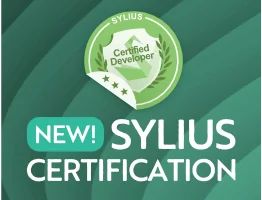How to Embed Forms
Often, you'll want to build a form that will include fields from many different
objects. For example, a registration form may contain data belonging to
a User object as well as many Address objects. Fortunately this can
be achieved by the Form component.
Embedding a Single Object
Suppose that each Task belongs to a Category object. Start by
creating the Category class:
1 2 3 4 5 6 7 8 9 10
// src/Entity/Category.php
namespace App\Entity;
use Symfony\Component\Validator\Constraints as Assert;
class Category
{
#[Assert\NotBlank]
public string $name;
}Next, add a new category property to the Task class:
1 2 3 4 5 6 7 8 9 10 11 12 13 14 15 16 17 18 19 20 21 22
// ...
class Task
{
// ...
#[Assert\Type(type: Category::class)]
#[Assert\Valid]
protected ?Category $category = null;
// ...
public function getCategory(): ?Category
{
return $this->category;
}
public function setCategory(?Category $category): void
{
$this->category = $category;
}
}Tip
The Valid Constraint has been added to the property category. This
cascades the validation to the corresponding entity. If you omit this constraint,
the child entity would not be validated.
Now that your application has been updated to reflect the new requirements,
create a form class so that a Category object can be modified by the user:
1 2 3 4 5 6 7 8 9 10 11 12 13 14 15 16 17 18 19 20 21 22
// src/Form/CategoryType.php
namespace App\Form;
use App\Entity\Category;
use Symfony\Component\Form\AbstractType;
use Symfony\Component\Form\FormBuilderInterface;
use Symfony\Component\OptionsResolver\OptionsResolver;
class CategoryType extends AbstractType
{
public function buildForm(FormBuilderInterface $builder, array $options): void
{
$builder->add('name');
}
public function configureOptions(OptionsResolver $resolver): void
{
$resolver->setDefaults([
'data_class' => Category::class,
]);
}
}The end goal is to allow the Category of a Task to be modified right
inside the task form itself. To accomplish this, add a category field
to the TaskType object whose type is an instance of the new CategoryType
class:
1 2 3 4 5 6 7 8 9
use App\Form\CategoryType;
use Symfony\Component\Form\FormBuilderInterface;
public function buildForm(FormBuilderInterface $builder, array $options): void
{
// ...
$builder->add('category', CategoryType::class);
}The fields from CategoryType can now be rendered alongside those from
the TaskType class.
Render the Category fields in the same way as the original Task fields:
1 2 3 4 5 6 7 8
{# ... #}
<h3>Category</h3>
<div class="category">
{{ form_row(form.category.name) }}
</div>
{# ... #}When the user submits the form, the submitted data for the Category fields
are used to construct an instance of Category, which is then set on the
category field of the Task instance.
The Category instance is accessible naturally via $task->getCategory()
and can be persisted to the database or used however you need.
Embedding a Collection of Forms
You can also embed a collection of forms into one form (imagine a Category
form with many Product sub-forms). This is done by using the collection
field type.
For more information see the How to Embed a Collection of Forms article and the CollectionType reference.

